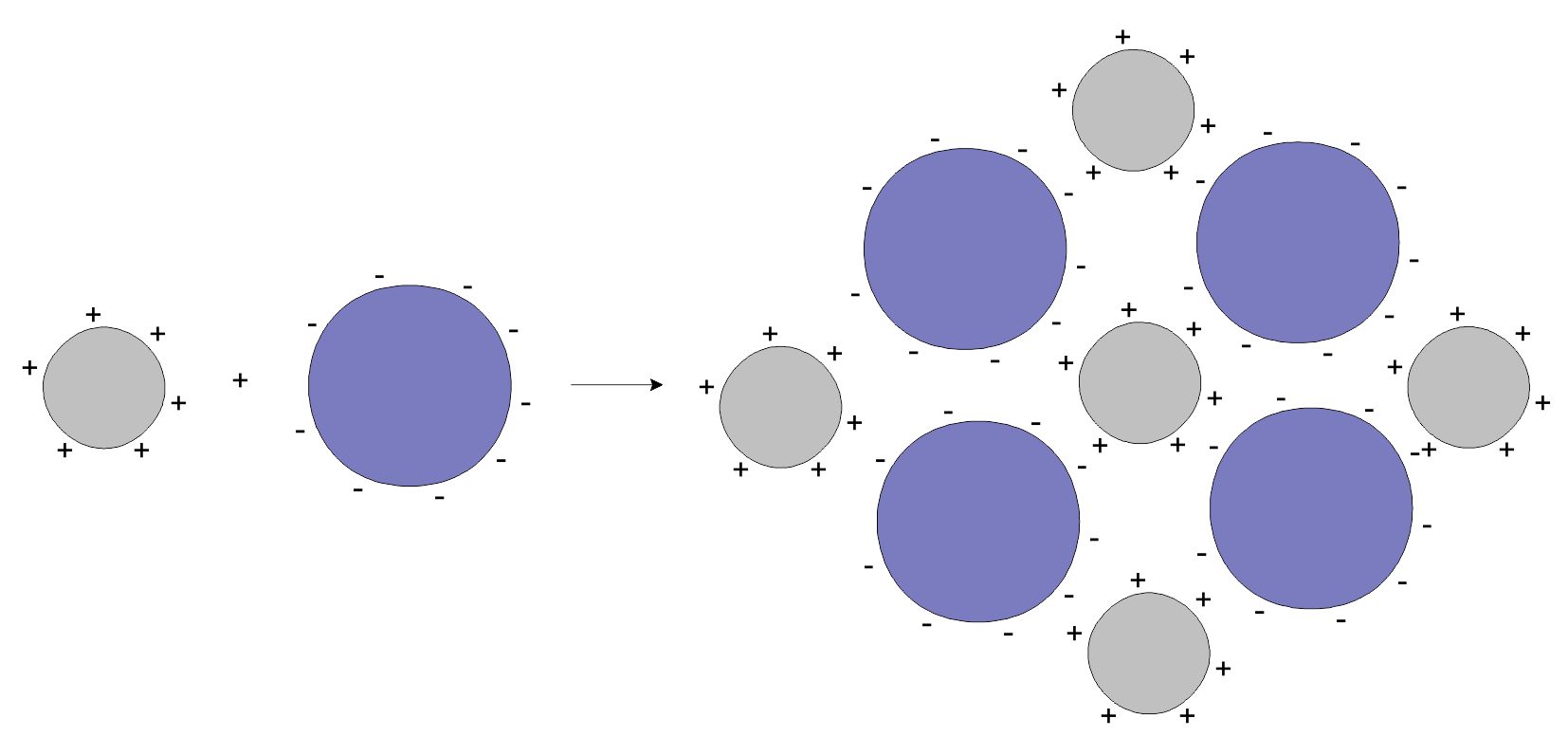
Flocculation and coagulation
Reaction types
What is flocculation and coagulation?
Flocculation and coagulation are two versions of the same phenomenon. Some molecules aggregate i.e. adheres to each other in lumps or clusters, due to differences in charge or hydrophobicity on the surface. When the clusters of aggregated molecules reach a certain size, they become insoluble and precipitates. If it's something the molecules do by themselves it's called coagulation, and it requires the presence of another molecule, it's flocculation. The facilitating agent in flocculation is called a flocculant.
Like complexes, flocculation and coagulation are electrostatic effects, only here there are no well-defined structure and the precipitation is from the combined molecular weight reaching the point where the molecules becomes insoluble (fig. 1).

Fig. 1: Flocculation of particles/molecules/ions with positive and negative charges on the surface.
Coagulation is usually an undesirable effect (e.g. blood from donors), which is why anti-coagulation agents are added (e.g. heparin in blood), but in some cases, like cheese, which is coagulated milk proteins, it is a desirable effect when controlled properly.
Like complexes, flocculation and coagulation are electrostatic effects, only here there are no well-defined structure and the precipitation is from the combined molecular weight reaching the point where the molecules becomes insoluble (fig. 1).

Fig. 1: Flocculation of particles/molecules/ions with positive and negative charges on the surface.
Coagulation is usually an undesirable effect (e.g. blood from donors), which is why anti-coagulation agents are added (e.g. heparin in blood), but in some cases, like cheese, which is coagulated milk proteins, it is a desirable effect when controlled properly.